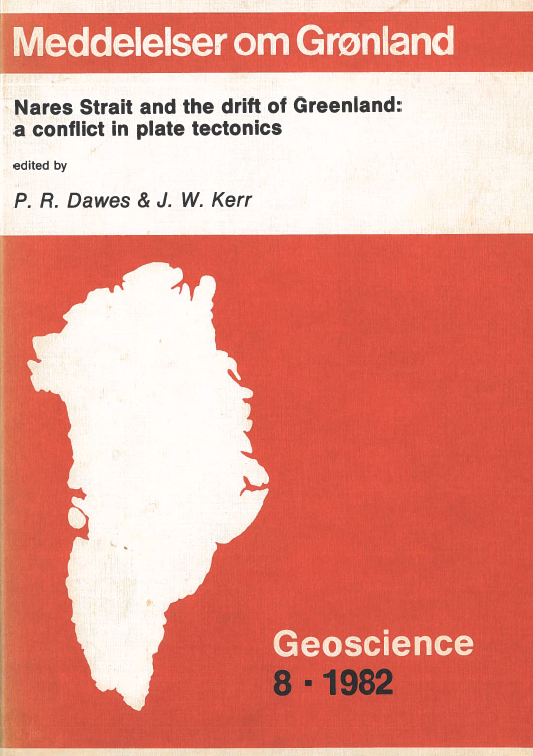Motion along Nares Strait recorded in the Lincoln Sea: aeromagnetic evidence
DOI:
https://doi.org/10.7146/moggeosci.v8i.139601Abstract
Detailed low-level aeromagnetic data taken over the Lincoln Sea and surrounding regions are discussed in an attempt to explain the evolution of the area and its relation to the possible movement of North America and Greenland along Nares Strait. A depth-to-source analysis of the data delineates a major northeastward extension of the Nares Strait extending to the western edge of the Morris Jesup Rise, and identified here as the Arctic Ocean portion of the Wegener Fault or Fracture Zone. Two regions of moderate amplitude, short wavelength anomalies characterized by shallow (< 2 km) magnetic basement are delineated, one to the north of Ellesmere Island and the other to the northwest of the Morris Jesup Rise, as well as a steep escarpment paralleling the Wegener Fault and forming the northwest boundary of a deep, sediment-filled basin. A plate tectonic analysis of these data suggests that the hot spot responsible for the formation of the Morris Jesup Rise-Yermak Plateau in the late Eocene and early Oligocene and the Kap Washington Group volcanics at about the Cretaceous-Tertiary boundary was also active in the late Cretaceous. During this period, prior to any strike-slip movement of Greenland along Nares Strait, a single, Iceland-like volcanic massif was formed north of Greenland and Ellesmere Island contemporaneously with postulated sea-floor spreading in the Makarov Basin. Sinistral movement of North America from Greenland along Nares Strait, and along a second "Ellesmere Fracture Zone" extending northeast through the massif from the edge of the Ellesmere Island shelf then led to the formation in early Tertiary time of a deep sediment-filled basin due to thinning and foundering of the crust northeast of Nares Strait, the emplacement of the western half of the massif between Lomonosov Ridge and Ellesmere Island, and of the eastern half of the massif just west of the Morris Jesup Rise. A shift in the hot spot to the east then led, with the initiation of spreading in the Eurasia Basin, to the later formation of the Morris Jesup Rise and Yermak Plateau. A total left-lateral displacement of about 250 km between these features is noted, similar to the amount suggested along Nares Strait by other geophysical work in Baffin Bay and the Labrador Sea.
Downloads
Published
How to Cite
Issue
Section
License
Coypyright by the authors and the Commision for Scientific Research in Greenland / Danish Polar Center. No parts of the publications may be reproduced in any form without the written permission by the copyright owners.


